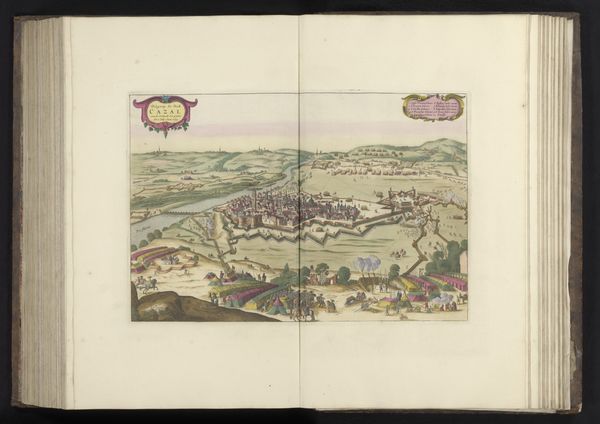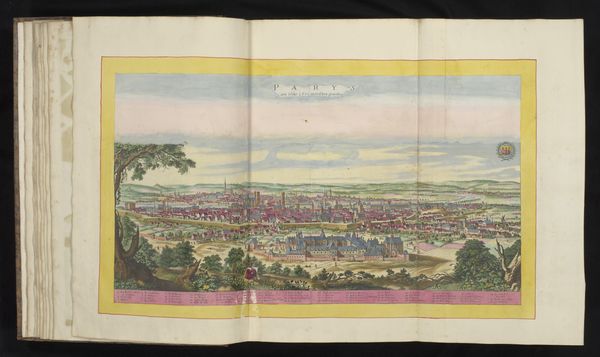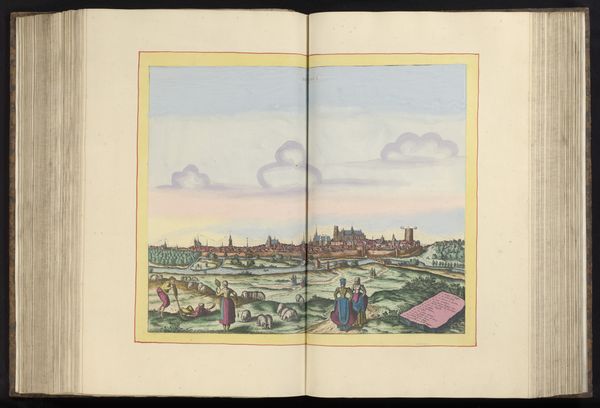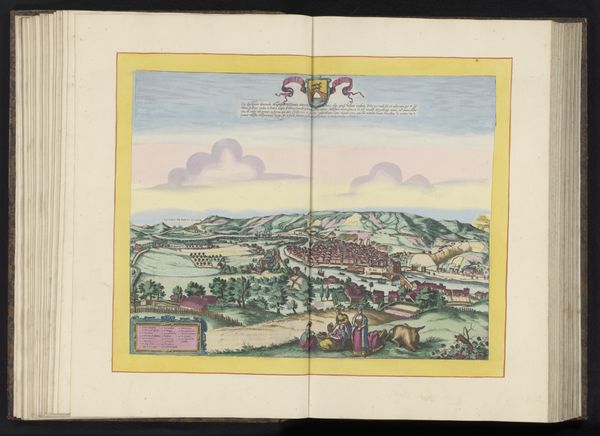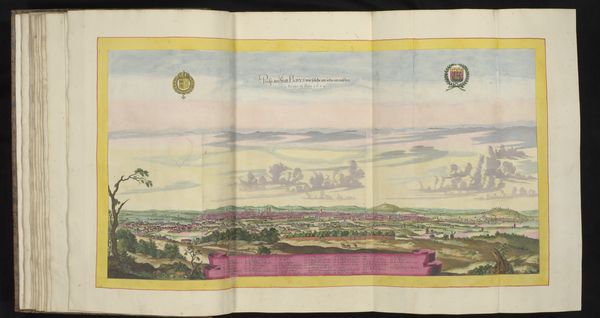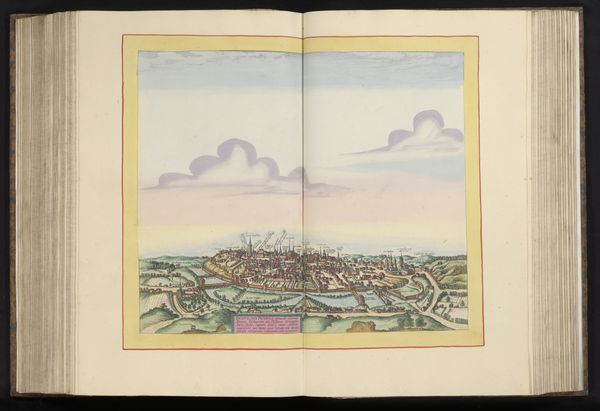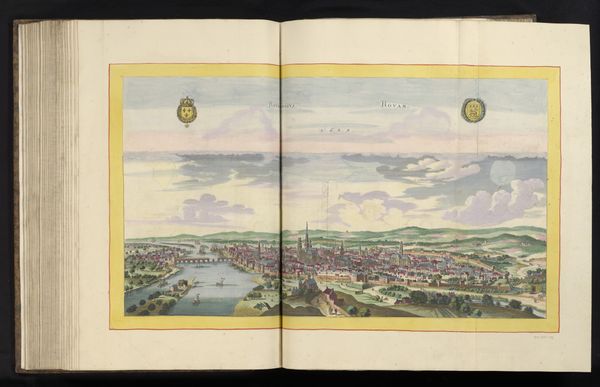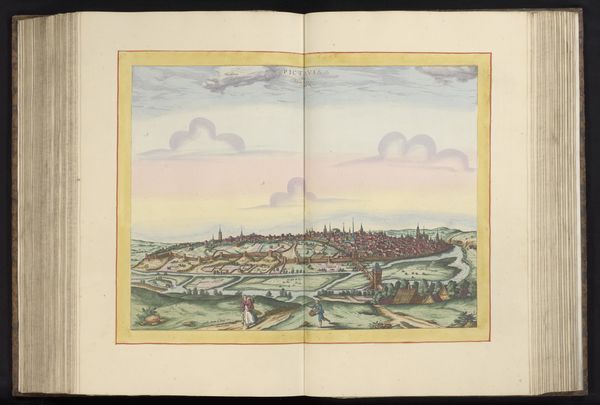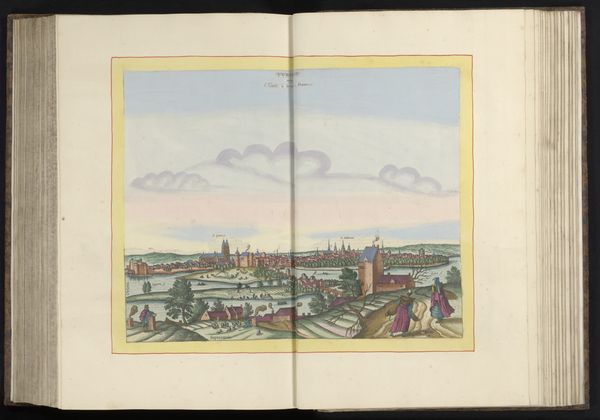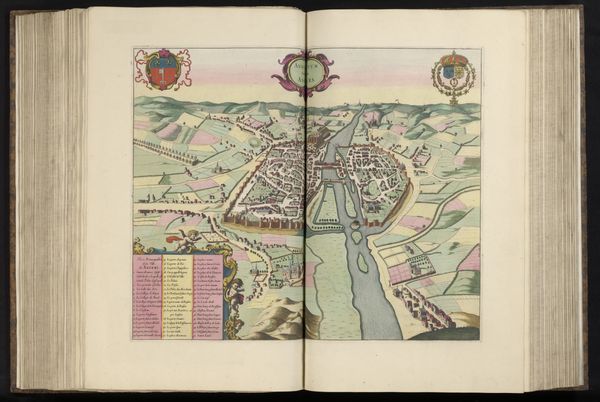
drawing, print, paper, pen, engraving
#
drawing
# print
#
landscape
#
perspective
#
paper
#
coloured pencil
#
pen work
#
pen
#
cityscape
#
northern-renaissance
#
engraving
#
realism
Dimensions: height 406 mm, width 1980 mm, height 535 mm, width 2030 mm
Copyright: Rijks Museum: Open Domain
Curator: So, here we have a piece titled "Panorama van Abbeville in vogelvluchtperspectief." It's an engraving and print, made with pen and coloured pencil on paper, dating from sometime between 1596 and 1652. Editor: Wow, talk about seeing the world differently. This isn't just a cityscape; it's like they wanted to capture the idea of a city, not just what it looks like on the ground. Kinda has that god's-eye vibe, don't you think? Curator: Absolutely! The 'vogelvluchtperspectief' or bird's-eye view, was very popular during the Northern Renaissance. It's not just about realism, though the detail is impressive. There’s symbolic weight here. It showcases civic pride and perhaps even military strategic information. Abbeville presented as orderly and formidable. Editor: Formidable, yes, but also surprisingly... cozy? All those little houses crammed together. It’s like a human beehive. And look at those figures walking outside the walls; the whole scene is brimming with human energy, captured through pen work and drawing that pops. Curator: The perspective gives prominence to elements important to the city's identity: churches, civic buildings within those defensive walls. These are potent symbols of societal structure, of power, protection and piety. We're meant to understand Abbeville not just as a place but as an idea. Editor: But I can't help wondering how accurate it really is. The artist wasn’t using drones, after all! There’s a kind of imaginative reconstruction happening. A blend of observation, memory and sheer invention! It’s the mapmaker as poet, not just a surveyor. Curator: That's a fair point. It represents a collective vision, a desired image. The map becomes a statement of what the city wants to project – its order, wealth, and influence, solidified and spread. It also plays into a long lineage of mapping as a form of visual propaganda. Editor: Well, seeing it that way, it feels less like an historical record and more like a collective dream frozen in ink and paper. Kind of changes how I see these old cityscapes. Curator: Precisely. It invites us to think critically about how we depict places, and how those depictions reflect deeper aspirations. Editor: I guess, in a way, it also offers a look into how we, as humans, seek control and try to make sense of a complex world using the power of perspective. Thanks! Curator: You've touched on such a vital point; perspective isn't just about seeing; it is always also about understanding and power. Thank you.
Comments
No comments
Be the first to comment and join the conversation on the ultimate creative platform.

